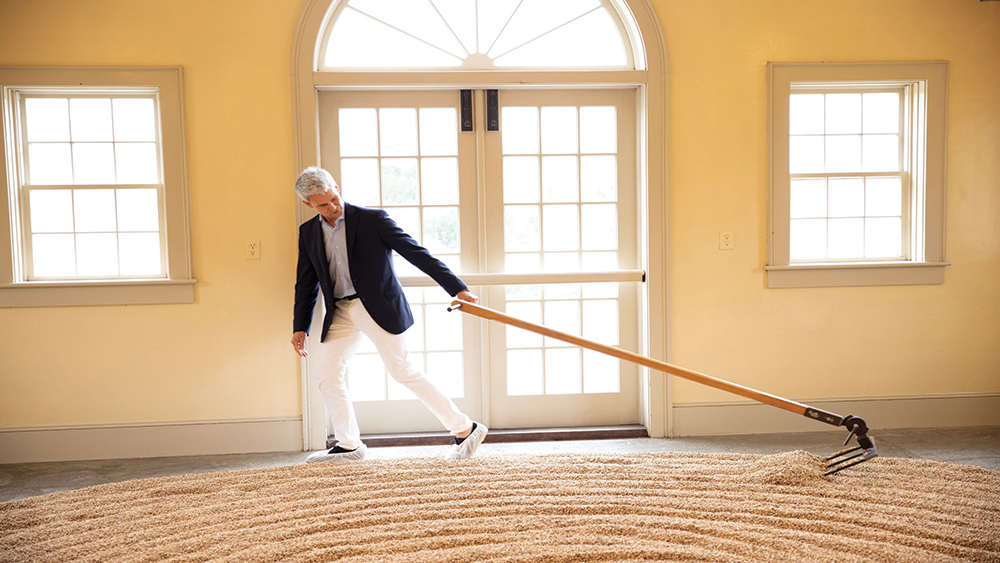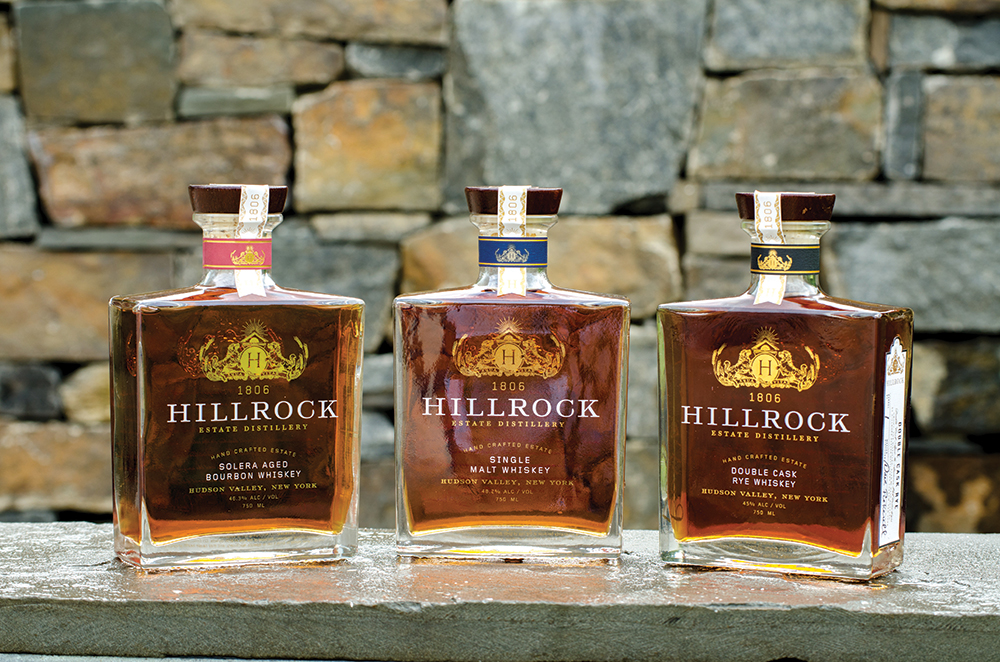Young Spirits: Hillrock Estates
The owners of this Ancram, New York, distillery are keen on terrior.
Article by Tom Johnson
Jeffrey Baker, cofounder of Hillrock Estates Distillery in Ancram, New York, knows the origin of every bottle of whiskey the distillery makes. He can track it back not just to specific batches or barrels, but to the fields where the grain was grown and the weather during the grain’s growth, according to his meticulous record keeping.
“There’s nobody else in the business that can trace the lineage back the way we can,” he says.
He and his co-workers at the distillery are believers in the French concept of terroir (pronounced “ter-WAH”), the theory that the unique combination of soil, terrain, and weather in a place endows its produce with a singular character. The concept of terroir has never been applied to the making of American whiskey and is best-known as the organizing principle of most of the world’s wines. (The United States, with its emphasis on grape variety, is an exception.)
Distinction of terroir is why the four acres of Domain Romanée-Conti in Burgundy produce wine that costs $16,000 a bottle, while a Vosnee-Romanée grown barely across the vineyard’s fence line comes to market at less than $100.
“A lot of our thinking comes from the wine business,” Baker says. “And a lot of the staff we’ve hired were sommelier-trained.”
Hillrock may be the only distillery in America that germinated from an economic theory. Baker grew up working on a maple sugar farm in upstate New York and, according to his cofounder and spouse, Cathy Franklin, “has farming in his DNA.”
As a single-malt-Scotch-drinking Manhattan real estate guy, he dabbled in a couple of farming projects, concluding that the commodity agriculture of his youth is now mostly a losing proposition. He developed a theory: To survive, farms in New York need to switch to what he calls “value-add farming,” in which produce is converted into something more valuable than a mere commodity.

“When I looked at the options of what farming-based business I could do here, I really went through every possibility that was a regional option,” he says. “It had to be a product that could be produced in this environment. I wanted it to be a world-class product and something that would be truly exceptional.”
As he researched, he hit upon the fact that 200 years ago, the Hudson River Valley was America’s breadbasket, growing two-thirds of the nation’s barley and almost half of its rye. Where there is grain, there is distilling, and before Prohibition, New York had more than 1,000 small distilleries. Baker decided he would revive that tradition and try to produce “the best single-malt in the world.”
“He stalked Dave Pickerell,” says Franklin, referring to the former Maker’s Mark master distiller and consultant. “He loved what Dave was talking about.”
Pickerell helped dozens of craft whiskey producers get started, preaching a gospel of individuality and the importance of place. (He died in 2018 but is listed on the Hillrock website
as a founder.) Pickerell and Baker clicked immediately, hatching a plan for a distillery that had control of its whole supply chain; one that didn’t just produce the whiskey, but also grew and malted the grain.
“Those individually are huge tasks,” says Aaron MacLeod, a grain researcher and director of the Hartwick (NY) College Center for Craft Food and Beverage, which provided training and technical support for Hillrock. “Very few people undertake
all three.”

Hillrock now farms more than 900 acres scattered around Columbia County, carefully testing and documenting the soil. The land is sown with heirloom grain varieties that once dominated the Hudson Valley but have been lost as agriculture evolved into agribusiness. They grow one strain of rye, for example, that originated from a tablespoon of heirloom seeds doled out to them by a grain bank.
“They’re really in the process of relearning how to grow food-grade grains and malt in the Hudson Valley,” MacLeod says. “It’s really an optimization process.”
In theory, aligning the right grains with the right fields should produce grain with high levels of the chemicals responsible for certain aromas and flavors. With its own malting house, Hillrock can control the malting process to further accentuate the characteristics that originated in the fields.
“Malting plays an enormous role in flavor and aroma,” says Andrea Stanley, who runs Valley Malt in nearby Hadley, Massachusetts, and whom Baker cites as an inspiration for his operation. “By malting, you’re in many ways able to create the performance attributes that you want.”
Baker has barreled batches of whiskey that are identical in every way except for the fields where the grain was grown. He is considering releasing it in sets so that people can see for themselves the power of place. Today he thinks in 50-acre increments, but he knows that if what Hillrock does works, he will be able to identify and extract distinct terroir character—this one extra-spicy, that one extra-sweet—from much smaller plots of land.
“At this point it’s still about experimentation, about how much impact terroir has on the whiskey,” Baker says. “Ultimately, we’ll become more and more micro-focused, and we’ll do it as individual releases where we’re identifying certain parcels we think will really produce exceptional whiskey.”
It’s a long project. Baker points out the French have tested and categorized their vineyards since the Roman Empire. “We want this to be a multigenerational business,” Franklin says.
“There’s a reason in Burgundy why they know that a half-acre parcel is spectacular,” Baker says. “They’ve been figuring it out for centuries. We’re still in the pioneer age in terms of really identifying what circumstance makes the most interesting whiskey. We’ll get there, but even with modern science, it’s going to take decades.”






